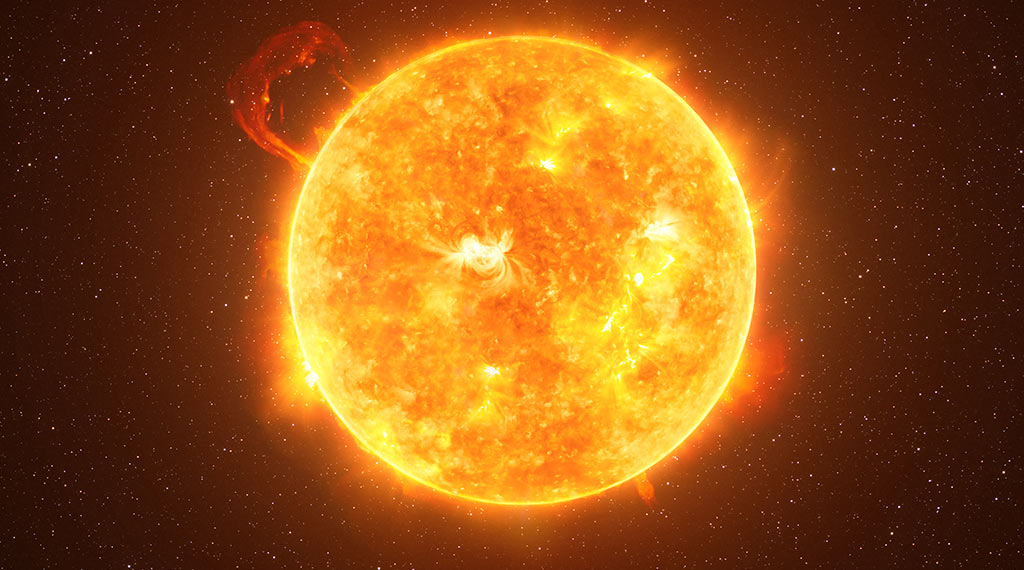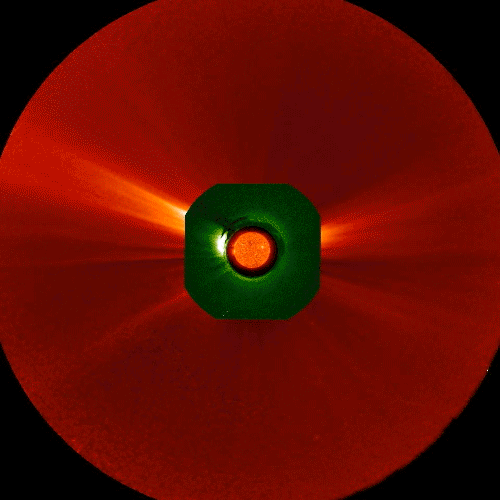For the cost of less than 1% of the Biden infrastructure bill we could protect our electric grid from certain collapse

Unless something is done, the American electrical grid will almost certainly die… from natural causes.
Most Americans regard the sun as a positive source of energy for the planet – nurturing plant life and powering solar panels to help provide the electricity we need to sustain modern civilization. And while we know that we must be protected from the harmful UV rays the sun produces, which cause injury such as sunburn and skin cancer, most don’t realize that the sun can produce even more powerful effects, damaging infrastructure both in space and on earth.
Unless America takes action to protect against the hazard of solar weather, it is nearly certain that we will suffer a catastrophic loss of our electric grid sometime in the future. The Center for Security Policy’s Director of Infrastructure Security Tommy Waller recently testified before the Secretary of Energy Advisory Board (SEAB) to explain why, and what must be done about it.
Waller’s testimony begins at 47:50
Scientists in the late 19th century observed the Sun produces “sunspots” and “solar flares.” These events sometimes correspond to incredible arrays of lights in the night sky (such as the Aurora Borealis AKA “Northern Lights”.) Sometimes, these visual events are followed by physical phenomena on earth – such as the massive solar storm in 1859 that caused Aurora Borealis to be seen as far south as New Orleans and Cuba.
The corresponding effects on Earth during that event (known as the “Carrington Event”) included telegraph machines catching fire – which scientists later determined was the result of ground induced currents (GICs) traveling through the earth’s crust. Eventually scientists discovered these GICs were created by the earth’s magnetic field when it is struck by the invisible magnetized particles expelled from the sun during the storm – something they named a “Coronal Mass Ejection” (CME).

When a CME strikes earth’s magnetosphere, it causes a Geomagnetic Disturbance (GMD) which can harm infrastructures that rely on long conductors, such as the telegraph, railroads, and – now – the electric power grid, because of the ground induced currents (GICs) they create. Those currents build up along the way in a long conductor and are then “induced” into whatever is at the end, whether it be a telegraph key or a massive electric transformer, such as the one catastrophically damaged in March 1989 at a nuclear power plant in Salem New Jersey.

This transformer sustained major damage from GICs induced by the March 1989 Solar Storm. Photo credit: Dr. Jeffrey J. Love, USGS
The March 1989 Solar Storm that damaged the above transformer and blacked out Quebec is regarded as a “40-year” solar storm (i.e. the moderate type that strikes earth roughly every 40 years). The 1859 Carrington Solar Storm is considered a “100-year” storm, is considered to be more powerful, and would thus cause more catastrophic damage. But, it’s not just 40 and 100-year storms that cause damage. A joint study by the global insurance leader Zurich and Lockheed Martin concluded that space weather has “an an average impact on the order of USD10 billion per year each for both the overall US and European economies.”
Since May 2013, the U.S. government agency that regulates the bulk power grid (FERC) has required the electric utility industry to establish and enforce a standard to protect the grid, especially our irreplaceable transformers, against a 100-year solar storm. National security experts, engineers, and solar weather scientists have warned for 9 years that the standard set by utilities is insufficient, a reality recently confirmed in a peer-reviewed study by world-renowned scientists.
On June 13, 2022, the Secretary of Energy Advisory Board (SEAB) was put on notice about the transparent deficiency of the current solar storm standard for the electric grid. Verbal and written testimony to the SEAB revealed the startling low level of protection required by the standard, which won’t even be enforced until 2028. The testimony pointed to a case study in the Virginia / Washington D.C. area and a bar graph that depicts the current standard (in green) versus the types of GICs produced in the 1921 Railroad Storm (in yellow) and even those produced by Soviet nuclear tests, since nuclear EMP causes a similar and even stronger hazard to the grid (in red).

This bar graph was included in testimony to the SEAB and depicts the current level of protection of the grid in Virginia (green) versus known and suspected hazard levels (yellow, orange, and red).
The good news is that there are known, tested, and affordable technological solutions to protect against GICs caused by solar weather, such as neutral blocking devices (NBDs) that can block and dissipate these harmful currents.
Independent experts from the Foundation for Resilient Societies estimate that it would cost $4.1 billion to harden the electric grid against these GICs. This closely matches the estimates of Mr. Scott McBride of DOE’s Idaho National Laboratory (INL) in his 2018 testimony before the U.S. Senate Homeland Security and Governmental Affairs Committee:
“Hence, it can be implied that there must be a priority to protect the most critical large power transformers in place – my preliminary estimates are that this would cost less than $4 billion if we made it a priority to install NBD’s at our most critical EHV substations. This is a small fraction of the value of replacement units, but more importantly is negligible compared to the loss of civilian life and long term recovery costs to the economy should they fail during a GMD or EMP event.” (emphasis added)
During the June 13, 2022 meeting, the SEAB voted to approve a set of recommendations for “Grid Modernization” for the Secretary of Energy. An entire section of this document focused on “Preventing Outages and Enhancing the Resilience of the Electric Grid.” Apparently absent was the recommendation to protect the grid against GICs caused by solar weather or nuclear EMP.
Given that the price of protection ($4 billion) is only.33% (one third of one percent) of the $1.2 trillion Infrastructure Bill and that Biden’s “Build Back Better” plan relies on an expansion of electric transmission lines and transformers, it would be prudent for Secretary Granholm to add this to her priority list for “Grid Modernization.”
- The Bad News and the Good News about America’s Electric Grid - December 3, 2025
- Placing Speed to Power on a Firm Foundation - November 26, 2025
- Speed to Power: Saving America’s Transformers - November 21, 2025
